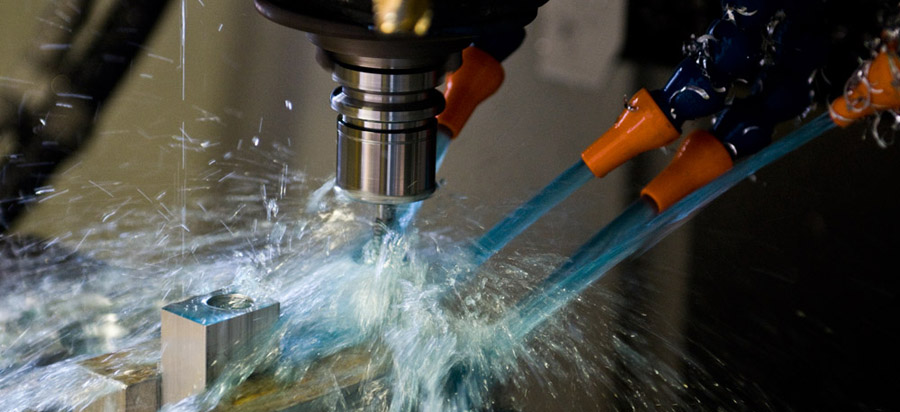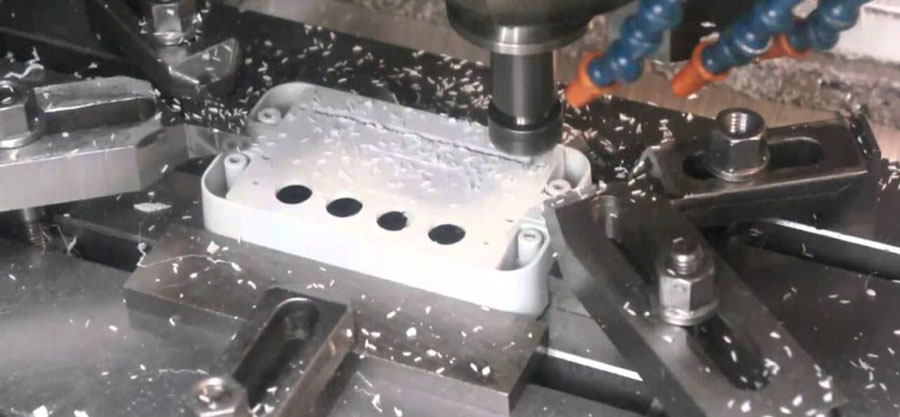The process analysis of CNC machining involves a wide range of aspects, so we only analyze the possibility and convenience of CNC machining here.
The size data on the part drawing should conform to the principle of programming convenience
1. The dimensioning method on the part drawing should adapt to the characteristics of CNC machining
On the drawings of CNC machining parts, the dimensions should be quoted on the same basis or the coordinate dimensions should be given directly. This marking method is not only convenient for programming, but also convenient for mutual coordination between dimensions, and brings great convenience in maintaining the consistency of design benchmarks, process benchmarks, inspection benchmarks and programming origin settings. Because part designers generally consider assembly and other use characteristics in dimensioning, they have to adopt a partially scattered marking method, which will bring a lot of inconvenience to process arrangement and CNC machining. Due to the high accuracy of CNC machining and repetitive positioning, the use characteristics will not be damaged due to large accumulated errors. Therefore, the local scattered labeling method can be changed to the same reference citation size or the coordinate size labeling method directly.

2. The conditions of the geometric elements constituting the contour of the part should be sufficient
The base point or node coordinates should be calculated during manual programming. During automatic programming, all geometric elements constituting the contour of the part must be defined. Therefore, when analyzing the part drawing, it is necessary to analyze whether the given conditions of the geometric elements are sufficient. For example, the arc and the straight line, the arc and the arc are tangent to the drawing, but according to the size given on the drawing, when calculating the tangent condition, it becomes the intersecting or separating state. Due to inadequate conditions of the geometric elements of the components, it is impossible to start programming. When encountering this situation, it should be resolved through consultation with the part designer.
The structural craftsmanship of each processing part of the part should conform to the characteristics of CNC machining
1) It is better to adopt uniform geometric types and dimensions for the cavity and shape of parts. This can reduce the tool specifications and the number of tool changes, make programming easier, and improve production efficiency.
2) The fillet size of the inner groove determines the size of the tool diameter, so the fillet radius of the inner groove should not be too small. The quality of the part manufacturability is related to the height of the processed contour and the size of the transition arc radius.
3) When the part is milling the bottom plane, the groove bottom fillet radius r should not be too large.
4) A unified reference positioning should be adopted. In CNC machining, if there is no unified reference positioning, the position and size of the contours on the two faces after machining will be inconsistent due to the reinstallation of the workpiece. Therefore, to avoid the above problems and ensure the accuracy of the relative position after the two clamping processes, a unified reference positioning should be adopted.
It is best to have suitable holes as positioning reference holes on the parts. If not, set process holes as positioning reference holes (such as adding process lugs on the blank or setting process holes on the margin to be milled in the subsequent process). If the process hole cannot be made, at least the finished surface should be used as a unified reference to reduce the error caused by the two clamping.
In addition, it should be analyzed whether the required machining accuracy and dimensional tolerances of the parts can be guaranteed, whether there are redundant dimensions that cause contradictions or closed dimensions that affect the process arrangement.

Selection of processing method and determination of processing plan
(1) Selection of processing method
The selection principle of the processing method is to ensure the processing accuracy and surface roughness of the processed surface. Since there are generally many processing methods to obtain the same level of accuracy and surface roughness, in the actual selection, the shape, size and heat treatment requirements of the parts must be fully considered. For example, boring, reaming, grinding and other processing methods for IT7-level precision holes can meet the accuracy requirements, but the holes on the box body generally use boring or reaming instead of grinding. Generally, reaming is selected for small-sized box holes, and boring should be selected when the hole diameter is larger. In addition, the requirements for productivity and economy, as well as the actual conditions of the factory’s production equipment, should also be considered. The economic processing accuracy and surface roughness of common processing methods can be found in the relevant process manual.
(2) Principles for determining the processing plan
The processing of relatively precise surfaces on parts is often gradually achieved through rough machining, semi-finishing and finishing. It is not enough to select the corresponding final processing method for these surfaces based on the quality requirements, and the processing plan from the blank to the final shape should be determined correctly.
When determining the processing plan, firstly determine the processing method required to meet these requirements according to the requirements of the main surface accuracy and surface roughness. For example, for a hole with a small diameter of IT7 precision, when the final processing method is fine reaming, it usually needs to be drilled, reamed and rough reamed before the fine reaming.


